Abstract
Purpose
The aim of this study was to compare the accuracy of two different styles of mechanical implant torque wrenches before and after sterilization and repeated use.
Materials and methods
Thirty new spring-style and friction-style mechanical implant torque wrenches from five different manufacturers were selected as subjects of study and assessed in terms of accuracy. Three manufacturers produced, spring-style (Dio, Neobiotech, Osstem) torque wrenches, and other three manufactures produced friction-style (Dentium, Osstem, Shinhung) torque wrenches. The procedure of target torque measurement was performed 10 times for each device and a digital torque gauge (MGT-12, Mark-10 Corp, USA) was used to record the measurements. All torque wrenches were used repeatedly for 20 times and then sterilized. This whole procedure was repeated 100 times and all torque wrenches were retested. The collected data was analyzed using a SPSS Statistics Analysis program to evaluate the accuracy of the torque wrenches and Mann-Whitney-U test was used for a comparative analysis.
Results
After sterilization and repeated use procedure, results did not show any significant difference between error values in the spring-style torque wrench group. However, the results demonstrated an increase in error values within the friction-style torque wrench group (P<.05).
Conclusion
There was no difference between the accuracy of new spring-style torque wrenches before and after 100 cycles of sterilization and repeated use (P>.05). There was significant difference between the accuracy of new friction-style torque wrenches before and after 100 cycles of sterilization and repeated use (P<.05). Within the limitation of this study, spring-style torque wrenches were more accurate than friction-style torque wrenches in delivering target torque values. (J Korean Acad Prosthodont 2016;54:8-13)
Go to : 
REFERENCES
1.Jemt T. Failures and complications in 391 consecutively inserted fixed prostheses supported by Brånemark implants in edentulous jaws: a study of treatment from the time of prosthesis placement to the first annual checkup. Int J Oral Maxillofac Implants. 1991. 6:270–6.
3.Jörnéus L., Jemt T., Carlsson L. Loads and designs of screw joints for single crowns supported by osseointegrated implants. Int J Oral Maxillofac Implants. 1992. 7:353–9.
4.Burguete RL., Johns RB., King T., Patterson EA. Tightening characteristics for screwed joints in osseointegrated dental implants. J Prosthet Dent. 1994. 71:592–9.

5.Jaarda MJ., Razzoog ME., Gratton DG. Effect of preload torque on the ultimate tensile strength of implant prosthetic retaining screws. Implant Dent. 1994. 3:17–21.

6.McGlumphy EA., Mendel DA., Holloway JA. Implant screw mechanics. Dent Clin North Am. 1998. 42:71–89.
7.McCracken MS., Mitchell L., Hegde R., Mavalli MD. Variability of mechanical torque-limiting devices in clinical service at a US dental school. J Prosthodont. 2010. 19:20–4.

8.Cehreli MC., Akça K., Tönük E. Accuracy of a manual torque application device for morse-taper implants: a technical note. Int J Oral Maxillofac Implants. 2004. 19:743–8.
9.Tan KB., Nicholls JI. The effect of 3 torque delivery systems on gold screw preload at the gold cylinder-abutment screw joint. Int J Oral Maxillofac Implants. 2002. 17:175–83.
10.Standlee JP., Caputo AA., Chwu MY., Sun TT. Accuracy of mechanical torque-limiting devices for implants. Int J Oral Maxillofac Implants. 2002. 17:220–4.
11.Goheen KL., Vermilyea SG., Vossoughi J., Agar JR. Torque generated by handheld screwdrivers and mechanical torquing devices for osseointegrated implants. Int J Oral Maxillofac Implants. 1994. 9:149–55.
12.Gutierrez J., Nicholls JI., Libman WJ., Butson TJ. Accuracy of the implant torque wrench following time in clinical service. Int J Prosthodont. 1997. 10:562–7.
13.Vallee MC., Conrad HJ., Basu S., Seong WJ. Accuracy of friction-style and spring-style mechanical torque limiting devices for dental implants. J Prosthet Dent. 2008. 100:86–92.

14.Joo YH., Lee JH. A study on accuracy and application of the implant torque controller used in dental clinic. J Korean Acad Prosthodont. 2011. 49:197–205.

15.Sadr SJ., Fayyaz A., Mahshid M., Saboury A., Ansari G. Steam sterilization effect on the accuracy of friction-style mechanical torque limiting devices. Indian J Dent Res. 2014. 25:352–6.

16.L'Homme-Langlois E., Yilmaz B., Chien HH., McGlumphy E. Accuracy of mechanical torque-limiting devices for dental implants. J Prosthet Dent. 2015. 114:524–8.
Go to : 
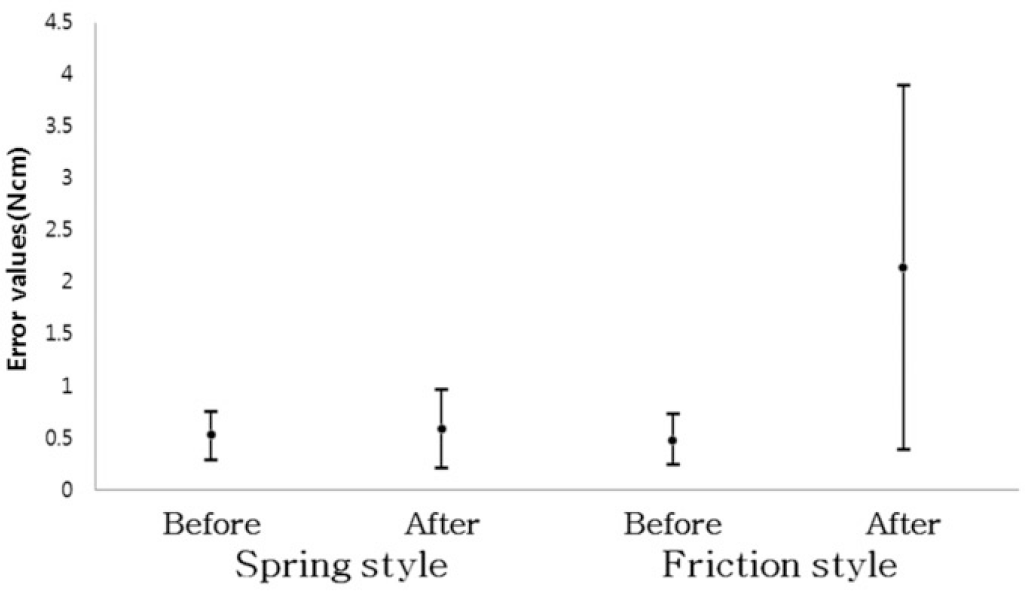 | Fig. 5.Mean value and standard deviation of difference between peak torque and target value before and after repeated use and sterilization cycle. |
Table 1.
Mechanical implant torque wrenches used in this study
Table 2.
Summary data for accuracy measurements of each torque wrench style (Ncm)




 PDF
PDF ePub
ePub Citation
Citation Print
Print


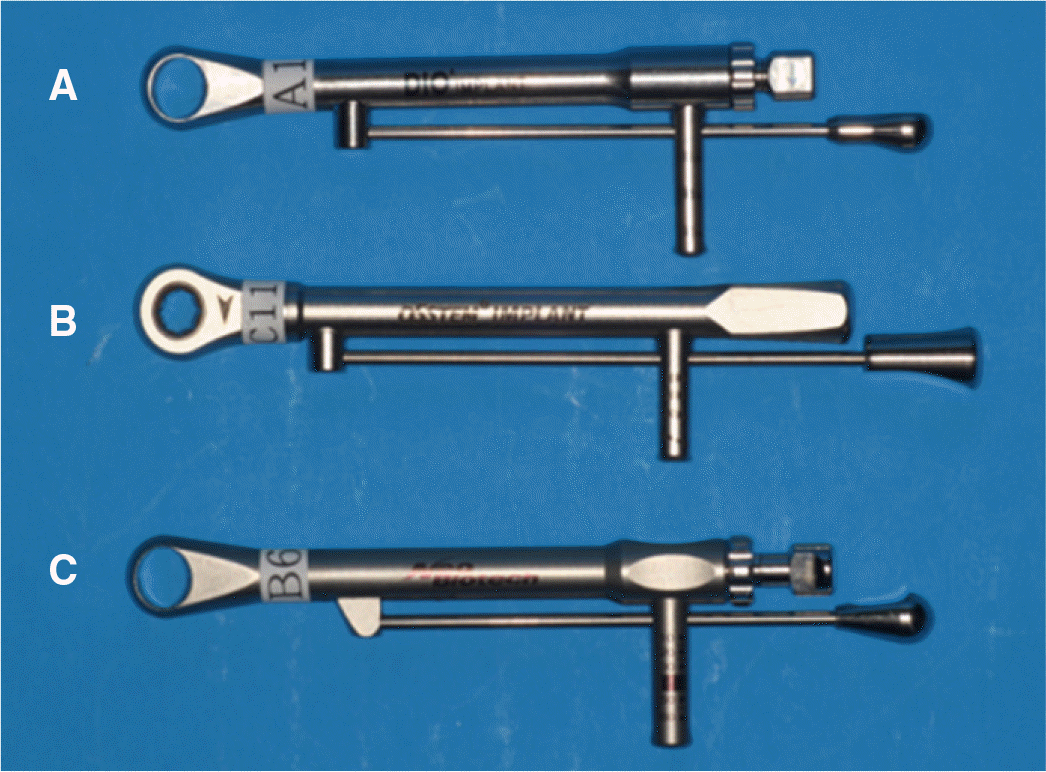
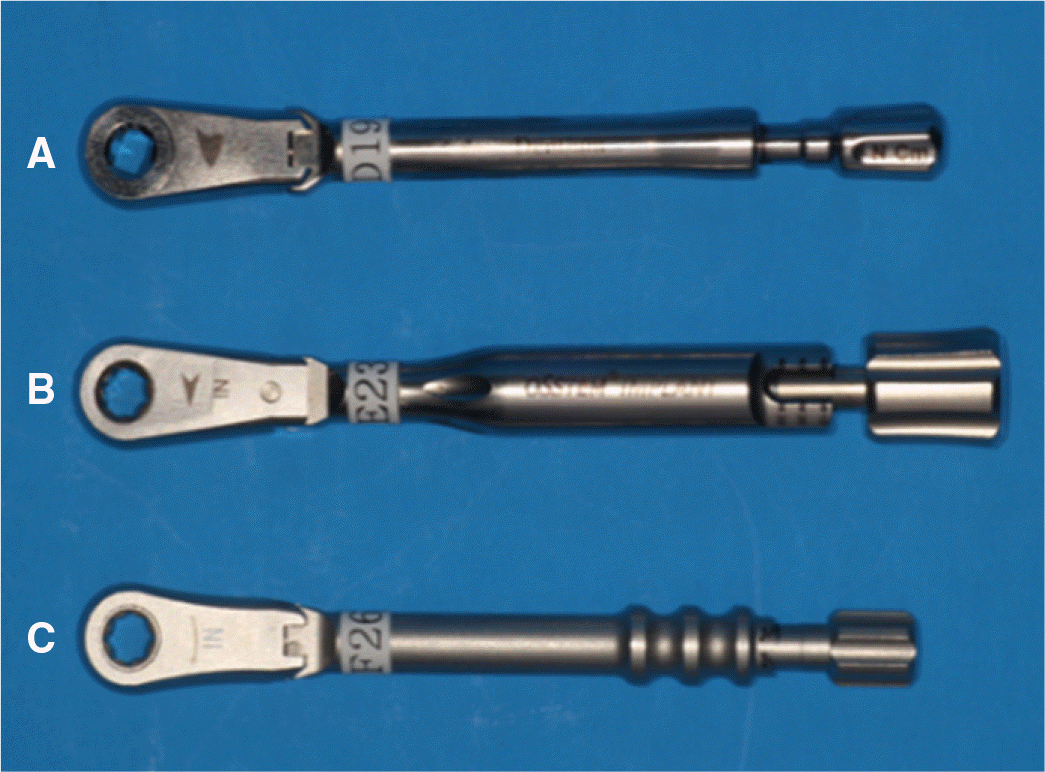
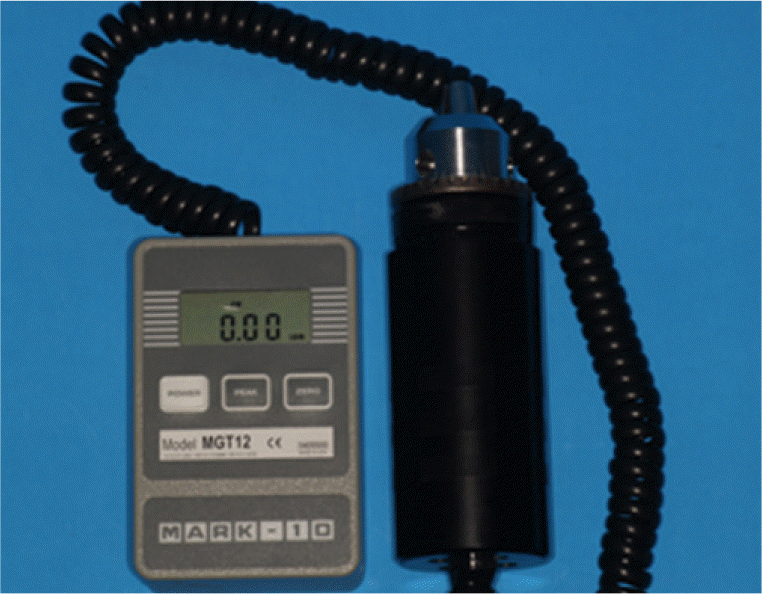
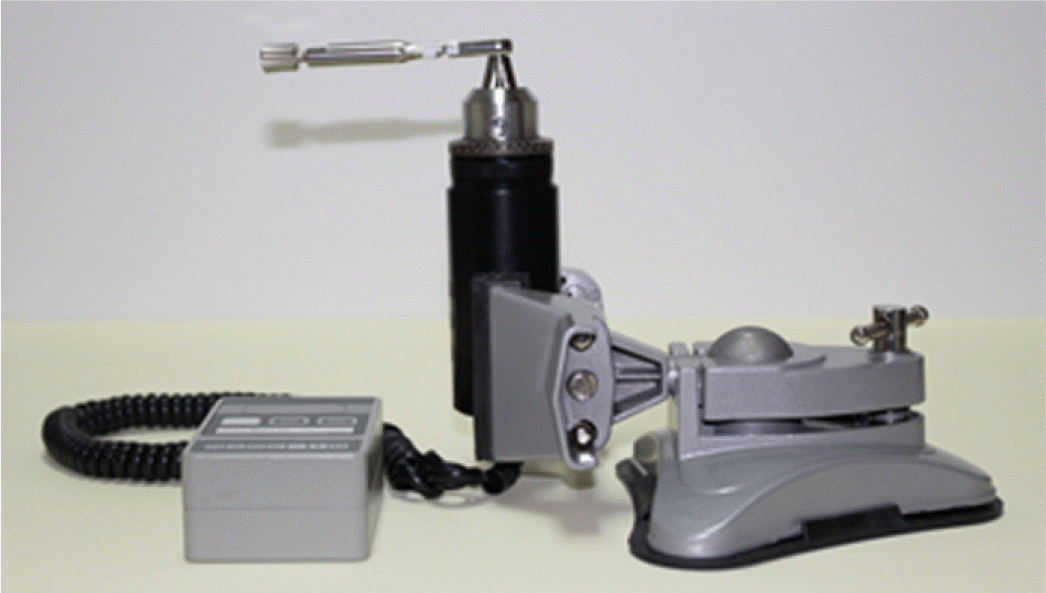
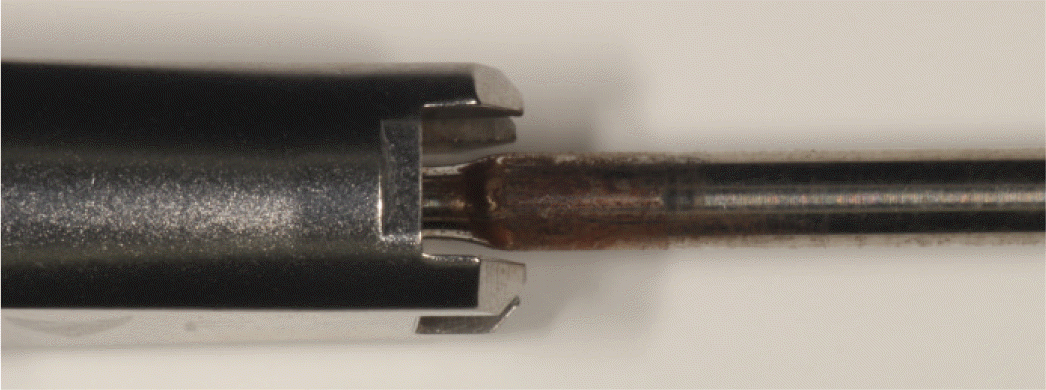
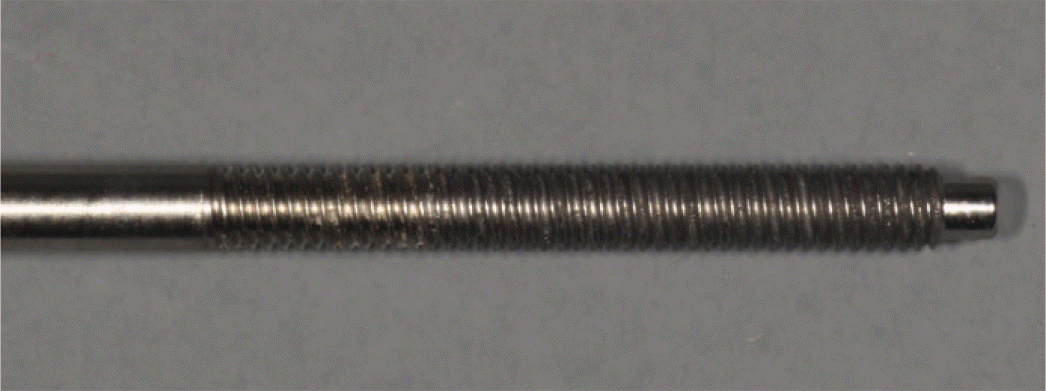
 XML Download
XML Download